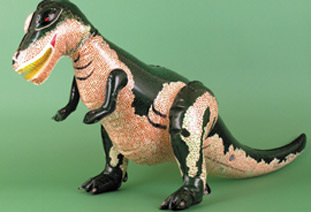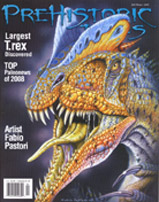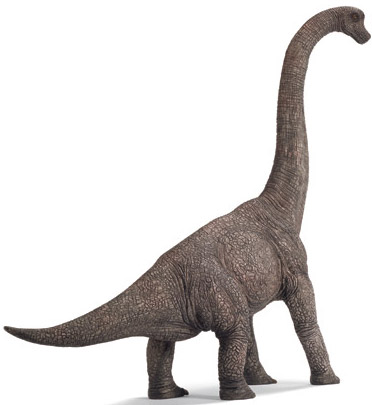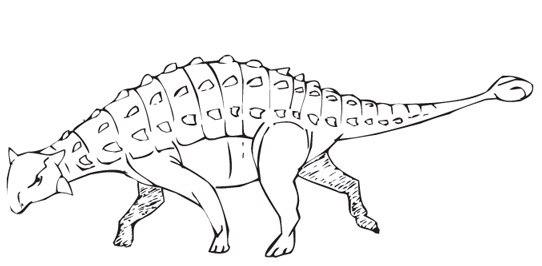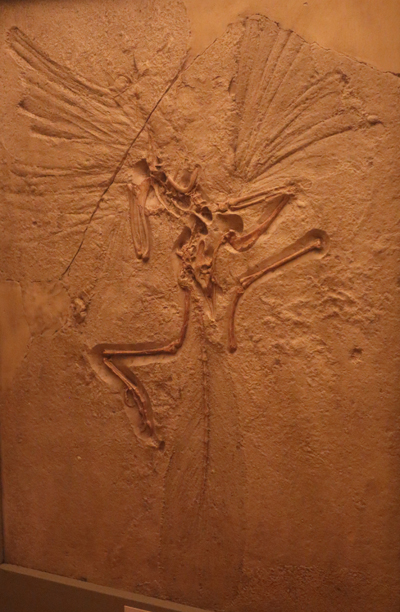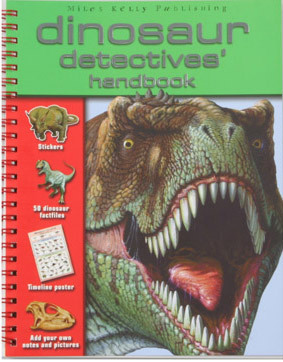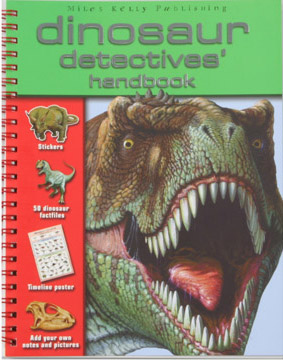Chinese Dinosaur Fossil shows Evidence of Feathers – Two Different Types
Scientists have debated the origins of birds and their relationship to feathered dinosaurs for many years and the most widely accepted theory is that they evolved from meat-eating dinosaurs. The debate over the relationship between Aves (birds) and theropod dinosaurs (meat-eaters) is actually quite old, the first discussion papers on this subject were published in Victorian times.
John Ostrom, the distinguished professor of vertebrate palaeontology at Yale University’s Peabody Museum of Natural History, published a number of papers analysing the evolution of flight. For John Ostrom, the commonly held believe at the time, of a sluggish, overgrown reptile being the typical view of a dinosaur, simply did not reflect the evidence in the fossil record. He was a driving force in the “Dinosaur Renaissance” of the early 1970s, depicting dinosaurs as perfectly adapted animals, active, agile and energetic.
“Dinosaur Renaissance”
His description of the dromaeosaur Deinonychus (Deinonychus antirrhopus) is regarded as one of the landmark moments in the history of modern palaeontology. Now thanks to the amazing fossil discoveries of Liaoning in China, palaeontologists have a number of fossil specimens of different feathered dinosaurs that imply an evolutionary link between small theropods and birds.
An Illustration of Deinonychus

Picture credit: Everything Dinosaur
However, a new report on a particular feathered dinosaur from China, about the same size as Deinonychus, suggests that some dinosaurs may have had a number of different feather types adorning their bodies. Some feathers may have been to help insulate them and keep them warm (indicating active warm-blooded animals), whilst other feathers may have served as ornamentation to help them attract a mate and signal to others within their herd (or should that be flock)?
Primitive Therizinosaurid
In a paper published on the primitive therizinosaurid (sometimes known as a Segnosaur), Beipiaosaurus, it is stated that two distinct types of feather have been found on the animal’s remains one for insulation, the other type perhaps used to signal for a mate, some of the earliest evidence of this type of feather found in the dinosaur fossil record.
Beipiaosaurus was named after the city of Beipiao, a city in Liaoning province in northern China. The first fossils of this dinosaur were discovered in this area in 1996. It was a very unusual looking dinosaur (we often think therizinosaurs seem to be made up of a mixture of different animal parts):
Article on therizinosaurs like Beipiaosaurus: Therizinosaurs – are they the strangest dinosaurs of all?
Beipiaosaurus
Beipiaosaurus was approximately 2-3 metres tall, heavily built and a plant-eater. The fossils date from the Early Cretaceous (Aptian faunal stage), approximately 120 million years ago. Beipiaosaurus had a relatively large head for a therizinosaur (later animals such as Nothronychus had proportionately smaller heads), a long neck and a broad body.
The shin bones are longer than the thigh bones and this dinosaur had three-toed feet. Scientists have identified fine, proto-feathers associated with fossils of this dinosaur, but the discovery of the elongated, broad, filamentous feathers has excited palaeontologists, who believed that such coverings existed but had rarely found traces of them.
It is believed that dinosaurs had these broad, showy feathers at some point in the past because more advanced forms have already been discovered on dinosaur remains.
The primitive feathers on Beipiaosaurus are similar to the earliest forms seen on ancient birds. The fossil remains of Beipiaosaurus are approximately 25 million years younger than the fossils of Archaeopteryx, the earliest bird yet discovered. There are similarities between the wider, filamentous feathers on Beipiaosaurus and those of Archaeopteryx. If scientists are correct in assuming that birds evolved from Theropods then the discovery of similar feathers on Beipiaosaurus proves that dinosaurs did have feathers of this type and indeed there may be other fossils of dinosaurs dating from before Archaeopteryx which would also show this feather type. They are waiting to be discovered.
Feathered Dinosaurs
Interestingly, in the report published in the scientific journal “The Proceedings of the National Academy of Sciences” by the Chinese research team, their study of the Beipiaosaurus specimen reveals information on where on the animal the various feather types grew. Feathers from the animal have been identified on the fossilised remains of half a skeleton, including the head, neck and part of the tail.
Those that were used for communication (the wide, filamentous feathers) grew most densely on the back of the neck and at the end of the creature’s tail. Ideal locations for a signalling device. We can imagine a flock of Therizinosaurs bobbing their heads at each other just as flamingos do. Or perhaps they waived their tails to communicate or combined both head and tail movements in a sort of dinosaur semaphore. The presence of such feathers will enable scientists to speculate on elements such as animal social interaction, hierarchy and herd behaviour, unfortunately, the hard evidence for this is rarely preserved in the fossil record.
An Artist’s Impression of the Therizinosaur Beipiaosaurus
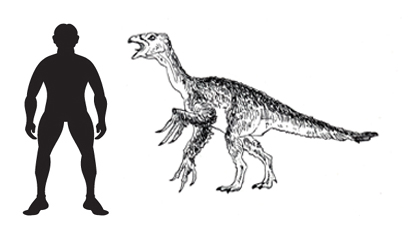
Therizinosaur drawing – Beipiaosaurus.
Picture credit: Everything Dinosaur
In the illustration above, the artist has clearly depicted Beipiaosaurus with long, quilled feathers on the head, neck and tail. Scientists are fairly confident that dinosaurs had colour vision and the feathers may have been brightly coloured to help them to be seen in the dark, forested environment where this dinosaur lived. Commenting on the research work, professor Xing Xu, of the Chinese Academy of Sciences (Beijing), stated:
“Feathers are diverse in morphology and function. In Beipiaosaurus most filamentous feathers that are slender and short are probably for insulation and the specialised elongate, broad, filamentous feathers are probably for display.
The professor and his colleagues from the Shandong Tianyu Museum of Nature and the Chinese Academy of Geological Sciences who carried out the research, confirmed that although feathered, Beipiaosaurus could not fly. It is believed that some dinosaurs from the Liaoning region were adapted to an arboreal existence and used feathers to help them glide from tree to tree, or perhaps even to flap a little, an example of powered flight.
One such dinosaur is Microraptor, a feathered dinosaur with a type of flight feather on its arms and legs. This small, crow-sized animal could climb trees and probably lived in the forest canopy out of reach from the carnivorous dinosaurs that roamed below.
Microraptor is one of the dinosaurs illustrated in the Feathered Dinosaur Tube available from Everything Dinosaur.
To view the feathered dinosaur tube and other dinosaur models: Dinosaur and Prehistoric Animal Models.
The tube also contains models of other feathered dinosaurs from Asia, including Caudipteryx, Dilong and Velociraptor.
The Feathered Dinosaur Tube
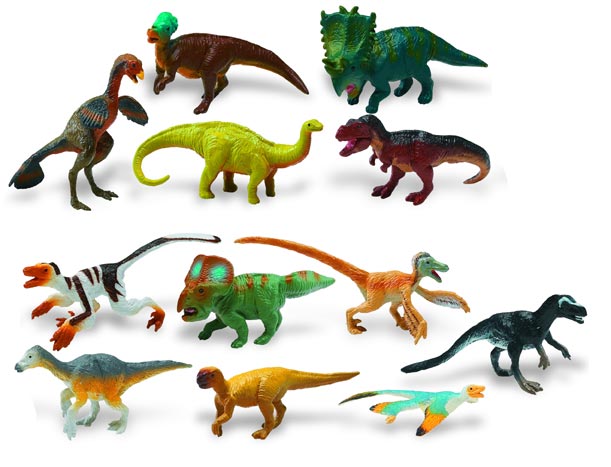
Feathered dinosaur “Toob”.
Picture credit: Everything Dinosaur
In their report these Chinese scientists have concluded that the discovery of primitive feathers “strongly supports the hypothesis that feathers evolved and initially diversified in non-avian theropods before the origin of birds and the evolution of flight”.
